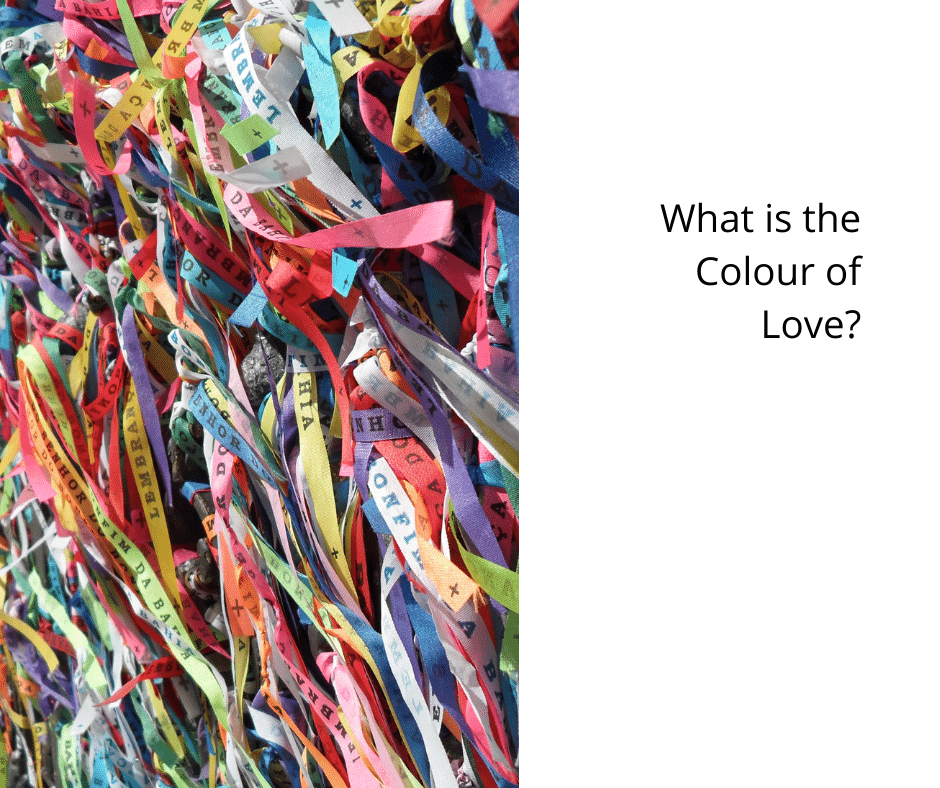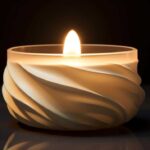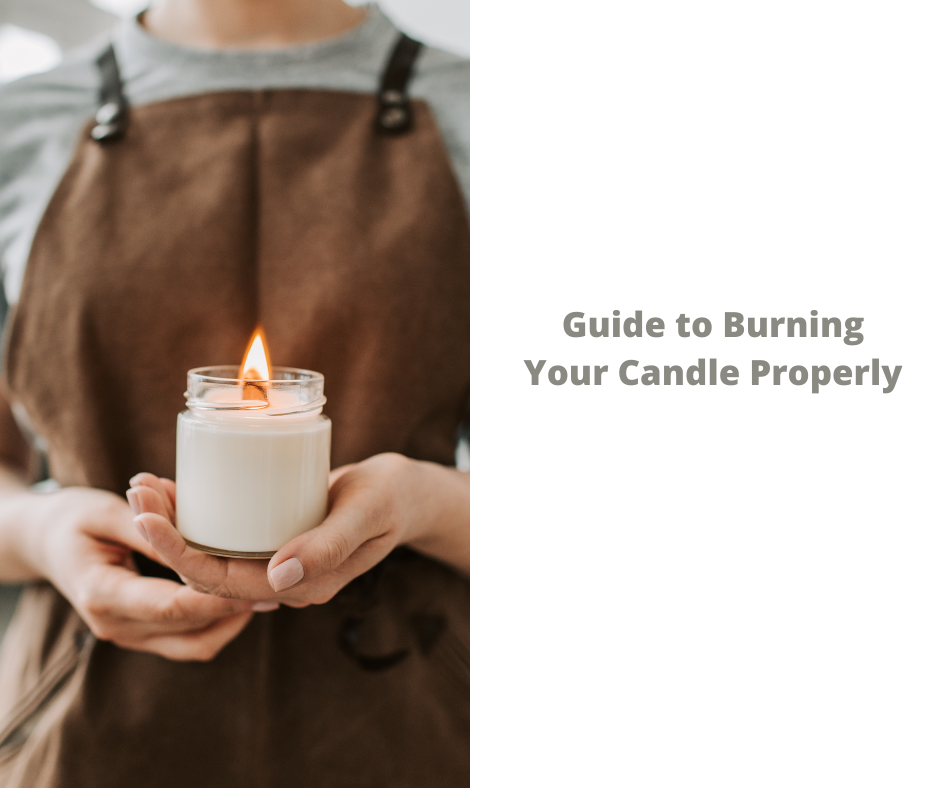Have you ever thought about the duration of time your candle will stay lit? No need to fret any longer! We have all the details you require.
In this guide, we will walk you through the simple steps of calculating candle burn time. By understanding the factors that affect burn time, choosing the right candle size, and examining the candle material, you’ll be well on your way to estimating how long your candle will last.
We’ll even provide you with a handy formula and a candle burn time calculator to make the process even easier.
So, sit back, relax, and let us show you how to make the most of your candles. Together, we’ll light up your space for hours on end!

Key Takeaways
- The burn time of a candle can be affected by various factors such as the diameter of the candle, wax type, fragrance oils, wick material, additives in the candle, candle size and shape, air circulation, weight and density of the wax, height of the candle, and container design.
- Measuring the candle diameter accurately and using a ruler or caliper for precise measurements can help in calculating burn time. Estimating burn time based on surface area and using formulas can also be useful, but conducting burn tests and considering alternative methods may be necessary due to limitations in candle burn time calculators.
- The choice of candle material, including wax melting point, wick material and size, additives in the candle, and proper temperature control during the melting process, can impact burn time. Different materials and their melting points, as well as the influence of fragrance oils and wax blends, can alter the melting point and affect overall burn time.
- Enhancing burn time can be achieved through the use of additives such as stearic acid and Vybar, which can enhance burn time and slow down burning. Adjusting fragrance load for desired burn time and scent throw, as well as the choice of wax and additives, can also influence overall burn time. Trimming the wick, using a candle snuffer, keeping the candle away from drafts, placing it in a stable area, and minimizing wasted wax are tips that can help extend burn time.
Understanding the Factors
To accurately determine the burn time of a candle, we need to take into account various factors that affect its rate of combustion. When calculating candle burn time, there are different methods that can be used.
One common method is to measure the diameter of the candle and use a formula that takes into consideration the diameter and the type of wax being used.
Another method involves weighing the candle before and after it has burned for a certain period of time. This allows us to calculate the burn rate and estimate the total burn time.
Additionally, it’s important to consider the impact of fragrance on burn time. Candles with added fragrance tend to burn faster compared to unscented ones. This is because fragrance oils contain chemicals that can affect the combustion process and speed up the burn rate.

Choosing the Right Candle Size
We recommend considering the size of the candle when determining its burn time. The candle size can significantly affect how long it will last. Here are three key factors to consider when comparing candle sizes:
- Diameter: A larger diameter candle generally burns longer than a smaller one. This is because the larger surface area allows for more wax to melt and be consumed.
- Height: Taller candles tend to burn for a longer time compared to shorter ones. The increased height means there’s more wax to burn through before the candle extinguishes.
- Weight: Heavier candles often have a longer burn time. The additional weight indicates more wax, which translates to a longer-lasting flame.
Determining the optimal candle size for your needs may require some experimentation with burn times.
In the next section, we’ll examine the impact of candle material on burn time.
Examining Candle Material
When examining candle materials, there are several important points to consider.
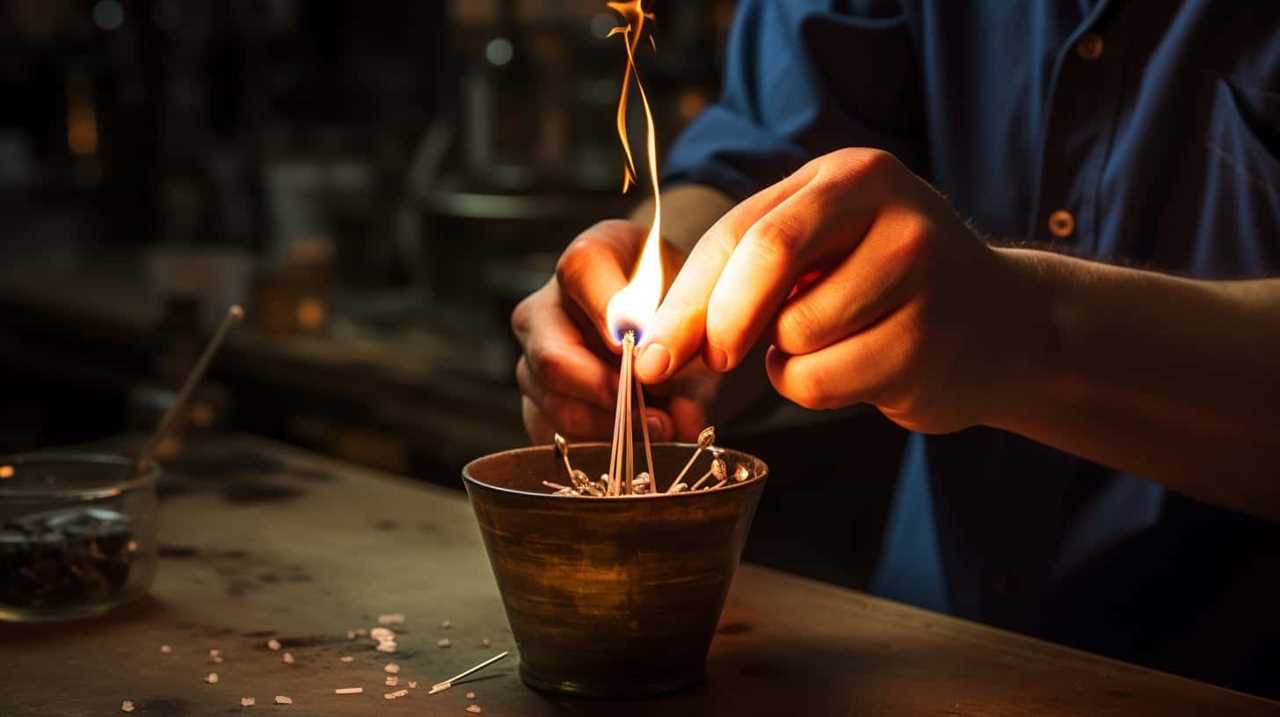
First, the wax melting point plays a crucial role in determining the burn time of a candle. Different types of wax have different melting points, which can affect how quickly or slowly the candle burns.
Second, the material used for the wick is also significant. The type of wick can impact the overall burn time and the quality of the flame.
Lastly, the presence of additives in the candle can affect its burn time and performance. Understanding these points will help in calculating the candle burn time accurately.
Wax Melting Points
Candle burn time can be influenced by the melting points of different candle materials. Understanding the wax melting points is crucial for candlemakers to ensure optimal performance. Here are three key points to consider:
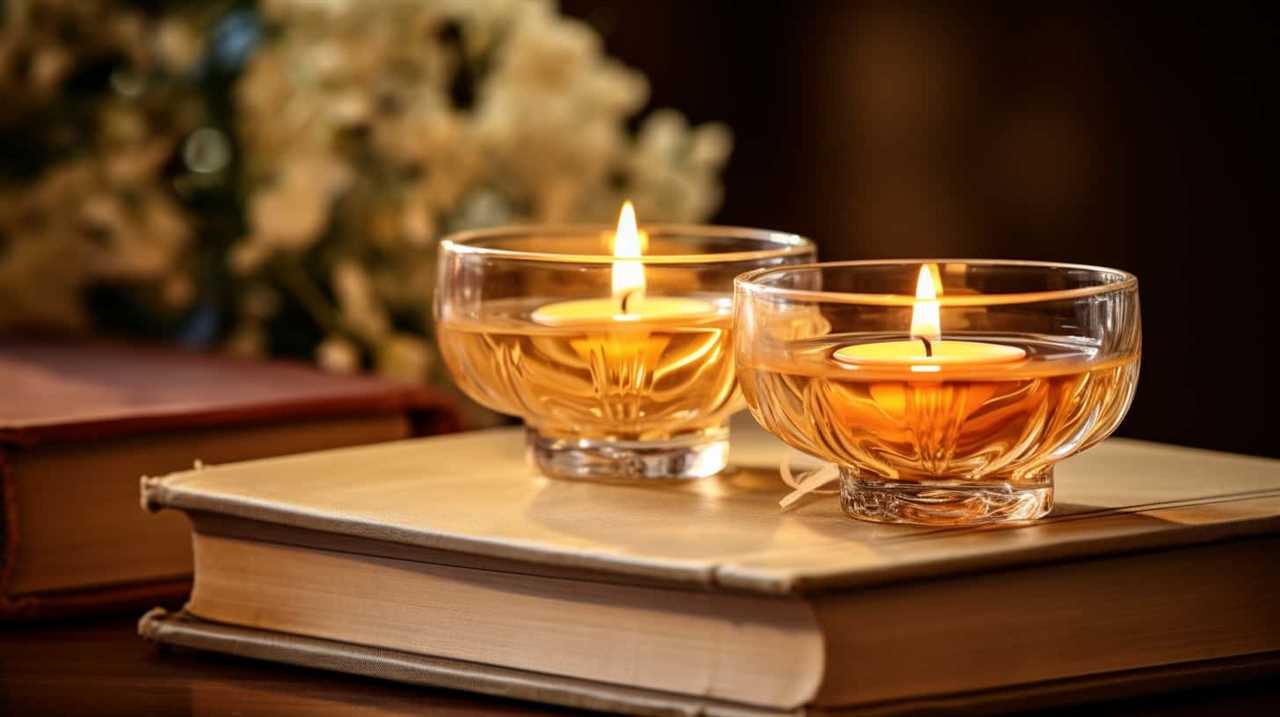
- Candle Temperature Control: Maintaining the appropriate temperature during the melting process is essential. Each type of wax has a specific melting point, and exceeding this temperature can lead to structural issues such as uneven burning, excessive dripping, or even wax pool fires. It’s important to closely monitor the temperature to achieve the desired burn time and prevent any safety hazards.
- Impact of Fragrance Oils: Fragrance oils are often added to candles to enhance their scent. However, it’s crucial to consider the impact of these oils on the melting point of the wax. Some fragrance oils have higher melting points, which can affect the overall burn time of the candle. Careful selection and testing of fragrance oils are necessary to ensure they’re compatible with the chosen wax and don’t hinder the candle’s performance.
- Wax Blends and Additives: Candlemakers often experiment with wax blends and additives to achieve specific characteristics in their candles. These additives, such as stearic acid or beeswax, can alter the melting point of the wax. By adjusting the blend and incorporating additives strategically, candlemakers can achieve longer burn times and improved stability.
Understanding the melting points of candle materials allows candlemakers to create candles that burn efficiently and provide a satisfying experience for customers.
Wick Materials Used
As we delve into the topic of wick materials used in candlemaking, it’s important to consider their impact on candle burn time. Wick materials play a crucial role in determining how efficiently a candle burns. Different wick materials have different burning characteristics, which can affect the rate at which the wax is consumed. The size of the wick also plays a significant role.
A wick that’s too small may result in a weak flame that struggles to melt the wax evenly, leading to tunneling and a shorter burn time. On the other hand, a wick that’s too large may produce a larger flame that consumes the wax too quickly, resulting in a shorter burn time as well. Therefore, selecting the appropriate wick materials and wick size is essential in maximizing the burn time of a candle.
In the next section, we’ll discuss the impact of additives on candle burn time.

Impact of Additives
To understand how additives affect candle burn time, we need to examine the impact of different candle materials. The type of material used in a candle can greatly influence its burn time and the potency of its fragrance. Here are three key factors to consider when it comes to the impact of additives on candle burn time and fragrance potency:
- Wax Type: Different wax types, such as soy, paraffin, and beeswax, have varying burn rates. Soy wax tends to burn slower than paraffin, while beeswax has a longer burn time due to its higher melting point. The choice of wax can affect the overall burn time of the candle.
- Additive Content: Some additives, like stearic acid or vybar, can be used to enhance the burn time of a candle. These additives help to harden the wax and slow down the burning process, resulting in a longer-lasting candle.
- Fragrance Load: The amount of fragrance oil added to the candle can affect both the burn time and the potency of the fragrance. Higher fragrance loads may result in a shorter burn time, but a stronger scent throw.
Considering Wick Type and Size
Our choice of wick type and size significantly impacts the burn time of candles. When considering wick type, it’s important to choose one that’s suitable for the type of wax being used. A wick that’s too small may result in a weak flame, leading to incomplete combustion and a shorter burn time. On the other hand, a wick that’s too large may produce a flame that’s too high, causing excessive heat and potentially shortening the burn time as well. Regular wick maintenance is also crucial to ensure optimal burning conditions. Trimming the wick to the recommended length helps control the flame height and prevents uneven burning. By carefully selecting the appropriate wick type and size and maintaining it properly, we can maximize the burn time of our candles.
In order to evaluate burn rate, we need to take into account not only the wick type and size, but also other factors such as the type of wax, candle diameter, and container design.
Evaluating Burn Rate
When it comes to evaluating burn rate, there are several factors that can affect the overall burn time of a candle. These factors include:
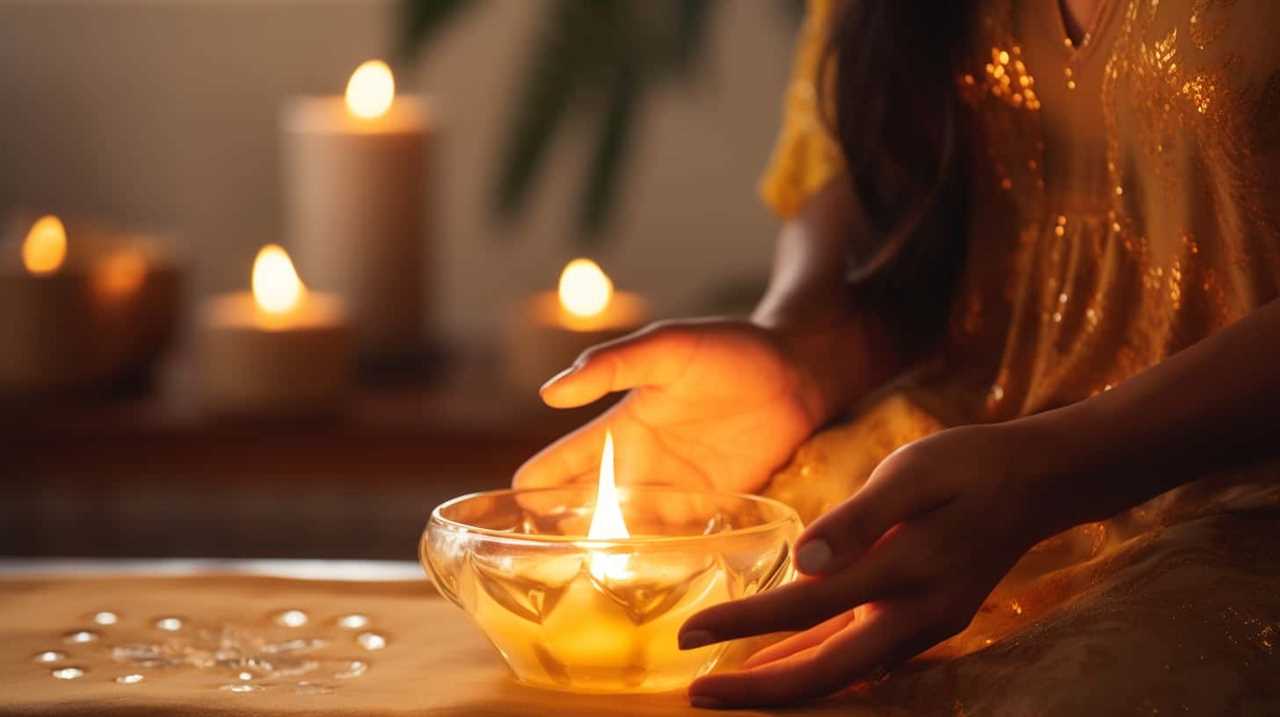
- The type of wax used
- The size and shape of the candle
- The presence of additives or fragrance oils
- The quality of the wick
To accurately determine the burn rate, it’s important to conduct thorough testing. This can be done by lighting the candle in controlled conditions and measuring the amount of wax consumed over a specific period of time.
Factors Affecting Burn Time
One important factor that affects candle burn time is the type of wax used. Different waxes have different burning characteristics, which can impact how long a candle will last. Here are three key factors to consider when evaluating the burn time of a candle:
- Wax composition: The type of wax used, such as paraffin, soy, or beeswax, can affect the burn rate. Soy wax, for example, tends to burn slower than paraffin, resulting in a longer burn time.
- Wick size: The size of the wick also plays a role in determining burn time. A thicker wick may produce a larger flame and burn the wax faster, while a thinner wick can result in a slower burn.
- Candle shape and size: The shape and size of the candle can impact how evenly the wax melts and the rate at which it burns. Taper candles, for instance, tend to burn slower than wider pillar candles.
Testing Burn Rate
To evaluate the burn rate of a candle, we can conduct various tests and measurements. One of the most common testing methods is to measure the time it takes for the candle to burn down a specific length. By marking the candle at a certain height and timing how long it takes for the flame to reach that mark, we can calculate the burn rate.
Another method involves measuring the flame intensity throughout the burning process. This can be done using a light meter or by visually comparing the flame to a standard reference. By monitoring the flame intensity over time, we can gain insights into the burn rate and the quality of the candle.
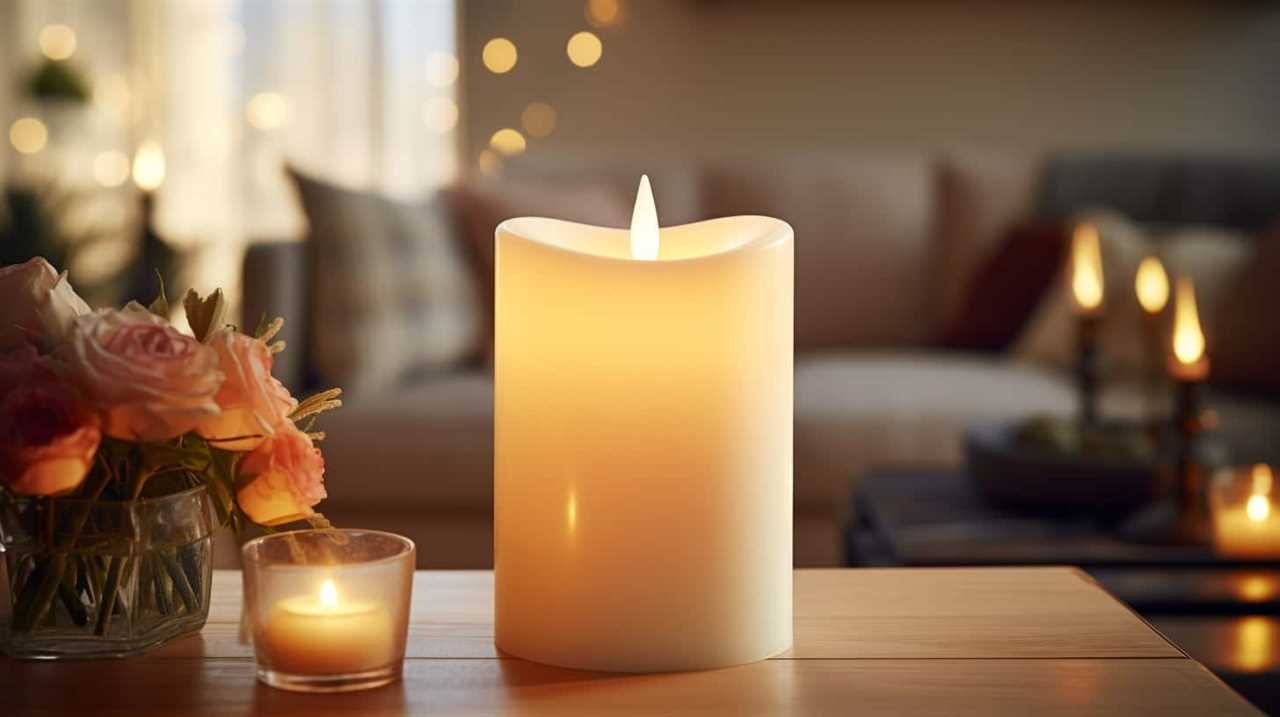
These testing methods provide valuable information for those who desire to serve others by producing high-quality candles.
Measuring Candle Diameter
We measure the diameter of the candle using a ruler or caliper, ensuring accuracy by aligning the measurement tool with the widest part of the candle.
To effectively measure the candle diameter, follow these steps:
- Choose the right tool: A ruler or caliper with clear markings ensures precise measurements.
- Position the tool: Place the ruler or caliper perpendicular to the candle’s widest point, ensuring it touches both sides. This guarantees an accurate diameter measurement.
- Take the measurement: Read the measurement directly from the ruler or caliper, noting the diameter in inches or centimeters.
Measuring the candle diameter is an essential step in estimating burn time. By knowing the diameter, you can calculate the surface area of the candle, which helps determine how long it will burn. Accurate measurements ensure that you can provide your customers with the most reliable estimates for their candle burn time.
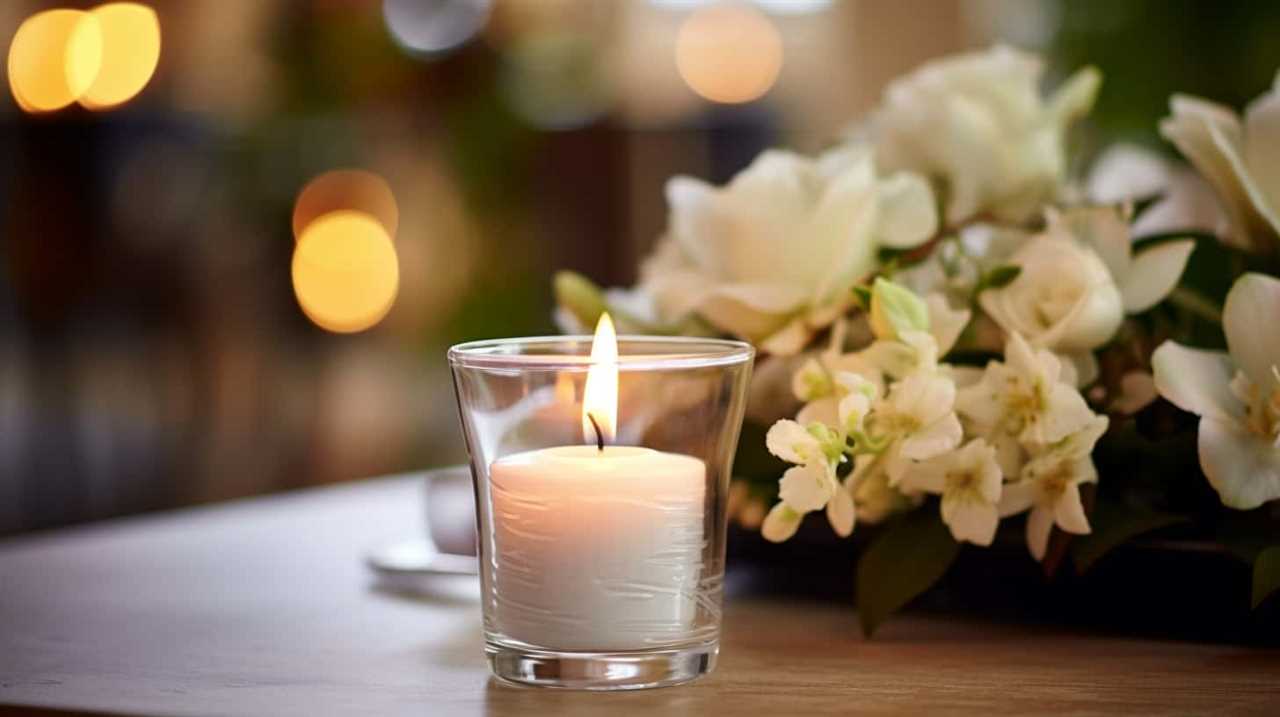
Estimating Burn Time With a Formula
To estimate burn time, we use a formula that calculates the amount of wax consumed per hour. This formula takes into account factors such as candle diameter, wick size, and wax type. By understanding this formula, you can better estimate the burn time of your candles and plan accordingly.
Here is a table that outlines the formula for estimating burn time:
| Candle Diameter (inches) | Wax Consumption (grams/hour) |
|---|---|
| 2 | 5 |
| 3 | 8 |
| 4 | 12 |
| 5 | 18 |
| 6 | 25 |
To use this formula, measure the diameter of your candle and find the corresponding wax consumption rate in the table. Multiply the wax consumption rate by the total number of grams of wax in your candle to estimate the burn time.
Using a Candle Burn Time Calculator
When using a candle burn time calculator, it’s essential to consider the efficiency of different waxes. This factor plays a significant role in determining the accuracy of the burn time calculation.

Additionally, other factors such as the size and shape of the candle, wick type, and environmental conditions can also affect the burn time.
Therefore, it’s crucial to take into account these variables to obtain accurate results when using a candle burn time calculator.
Efficiency of Different Waxes
Our candle burn time calculator allows you to determine the efficiency of different waxes. When it comes to candle burn efficiency, the type of wax used plays a significant role. Here are three factors to consider:
- Wax Composition: Different waxes have varying compositions, such as paraffin, soy, or beeswax. Paraffin wax is known for its high burn efficiency and clean burn, making it a popular choice. Soy wax is a renewable resource and also burns cleanly, making it environmentally friendly. Beeswax has a long burn time and emits a natural honey scent.
- Wick Selection: The type and size of the wick used can impact the burn efficiency of the candle. A properly sized wick ensures an even burn and prevents tunneling, maximizing the candle’s efficiency.
- Impact of Fragrance: Adding fragrance to candles can affect their burn efficiency. Some fragrances may require a larger wick size or specific wax blends to ensure optimal burning performance.
Factors Affecting Burn Time
To accurately determine the burn time of a candle, we can utilize a candle burn time calculator that takes into account various factors. These factors include the type of wax, size and shape of the candle, and the impact of air circulation on burn time. By inputting these variables into the calculator, we can obtain an estimate of how long the candle will burn.
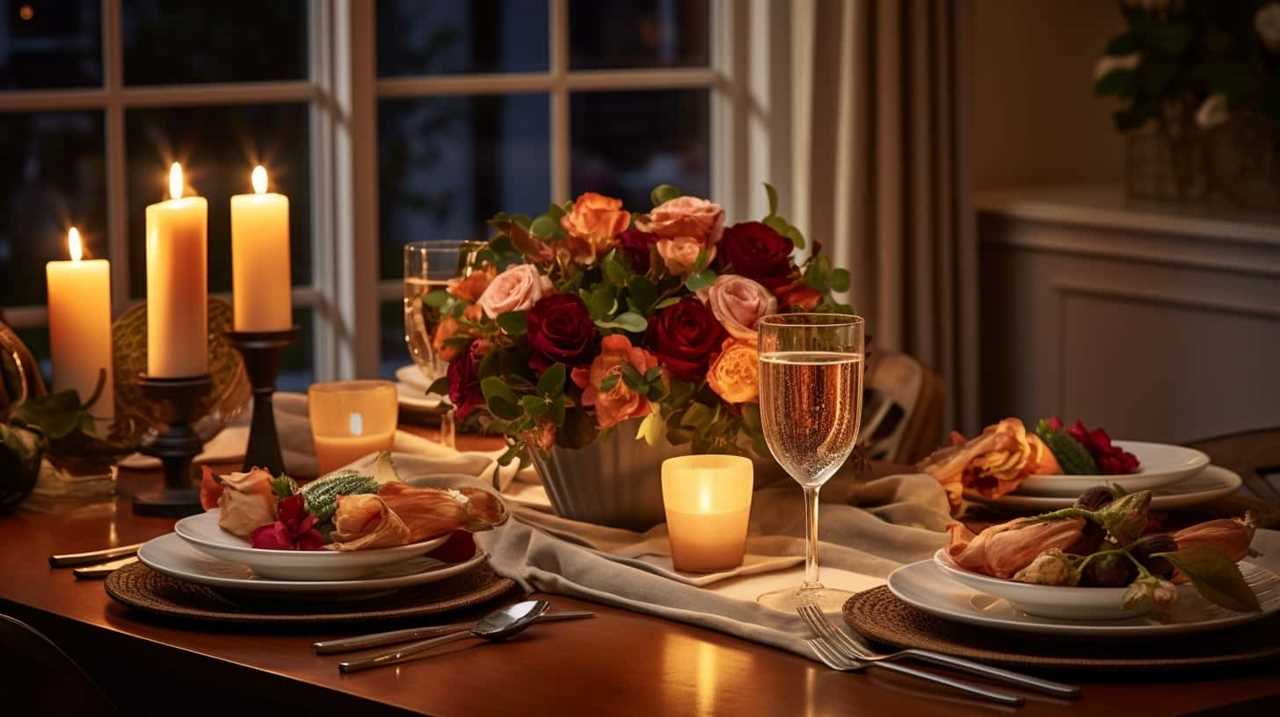
The candle burn time calculation methods typically incorporate formulas that consider the weight and density of the wax, the diameter and height of the candle, and the efficiency of the wick. Additionally, air circulation plays a significant role in the burn time, as it affects the oxygen supply to the flame. Poor air circulation can result in a shorter burn time due to incomplete combustion.
Accuracy of Calculators
Candle burn time calculators provide us with an accurate estimation of how long a candle will burn by taking into account various factors. However, it’s important to understand the limitations of these calculators and consider alternative methods for calculating burn time.
- Accuracy limitations: While candle burn time calculators can provide a good estimate, they aren’t always 100% accurate. Factors such as draft, wick size, and wax composition can affect burn time and may not be accounted for in the calculator.
- Variations in candle brands: Different candle brands may have varying burn times even if they’ve the same dimensions. This is because the composition and quality of the wax can differ between brands.
- Alternative methods: To complement the use of calculators, consider conducting your own burn tests. This involves lighting a candle and timing how long it takes to burn down a specific length. By repeating this test with different candles, you can compare burn times and make more informed estimations.
Understanding the limitations of candle burn time calculators and considering alternative methods can help ensure more accurate estimations.
Now, let’s explore how to adjust for different candle shapes.

Adjusting for Different Candle Shapes
When calculating candle burn time, it’s important to consider the various shapes of candles. The shape of a candle can have a significant effect on how quickly it burns and how long it lasts.
Irregularly shaped candles, such as those with multiple wicks or unusual contours, require a different approach to calculating burn time. To calculate the burn time for irregular shapes, measure the total surface area of the candle and divide it by the average burn rate per square inch. This will give you an estimate of how long the candle will burn.
Keep in mind that this method isn’t as precise as calculating burn time for regular shapes, but it can still provide a good approximation.
Tips for Extending Candle Burn Time
Here are some practical ways we can extend the burn time of candles:
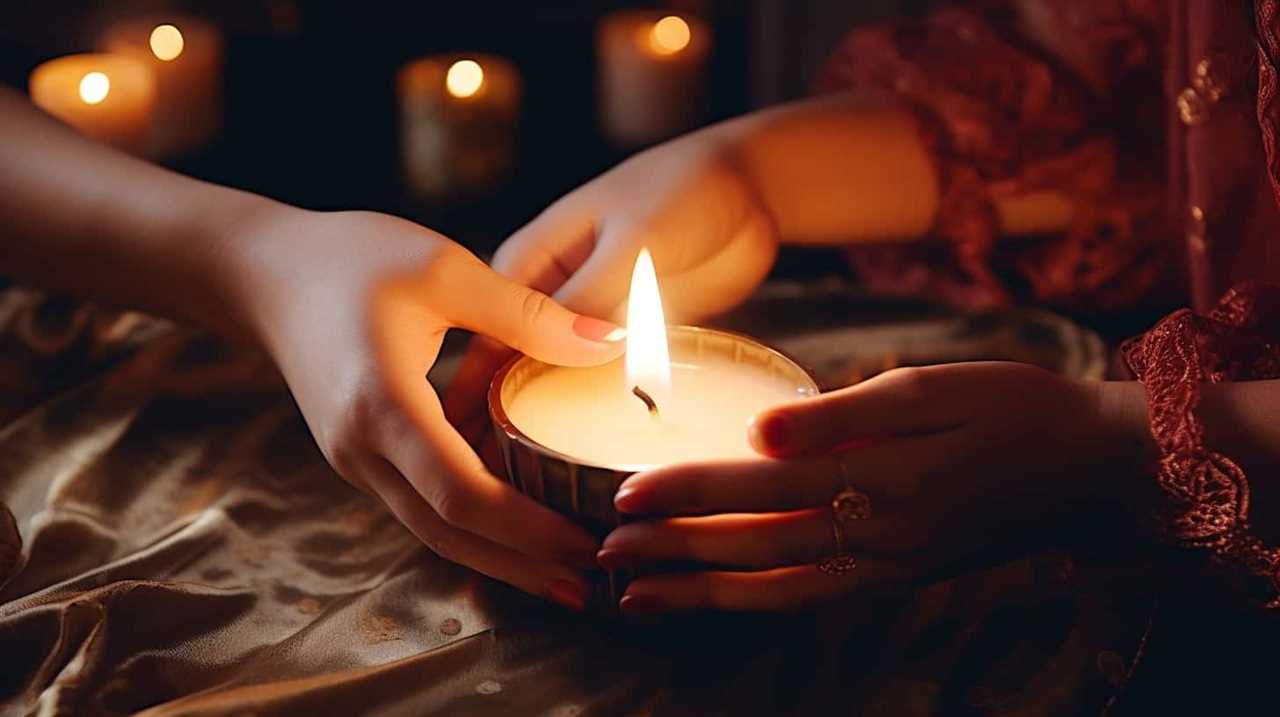
- Trim the wick: A long wick can cause the candle to burn faster and produce more soot. By trimming the wick to about a quarter of an inch before each use, you can ensure a slower and cleaner burn.
- Use a candle snuffer: Blowing out a candle can create a gust of air that can disturb the flame and cause it to burn faster. Instead, use a candle snuffer to extinguish the flame gently. This method helps to minimize wasted wax and prolong the burn time.
- Keep the candle away from drafts: Drafts can cause the flame to flicker and burn unevenly, leading to faster burn time and more soot. Place the candle in a stable area where it won’t be affected by drafts, such as an enclosed jar or a draft-free room.
Frequently Asked Questions
Are There Any Safety Precautions to Keep in Mind When Calculating Candle Burn Time?
When calculating candle burn time, it is important to consider safety precautions. Factors such as the size of the wick, type of wax, and container material can all affect how long a candle will burn.
How Can I Determine the Burn Time of Scented Candles Compared to Unscented Ones?
Factors affecting the burn time of scented candles compared to unscented ones include the fragrance concentration and the type of wax used. To prolong the burn time of scented candles, keep the wick trimmed and avoid placing them in drafty areas.
Can I Estimate the Burn Time of a Candle by Looking at Its Color or Design?
Estimating burn time based on color or design is not reliable as it doesn’t account for factors such as candle size and composition. To accurately determine burn time, consider these factors and calculate accordingly.
Is There a Specific Way to Measure the Diameter of an Irregularly Shaped Candle?
To measure the diameter of an irregularly shaped candle, alternative methods can be used. These methods involve using tools such as calipers or measuring tape to accurately determine the widest point of the candle’s circumference.
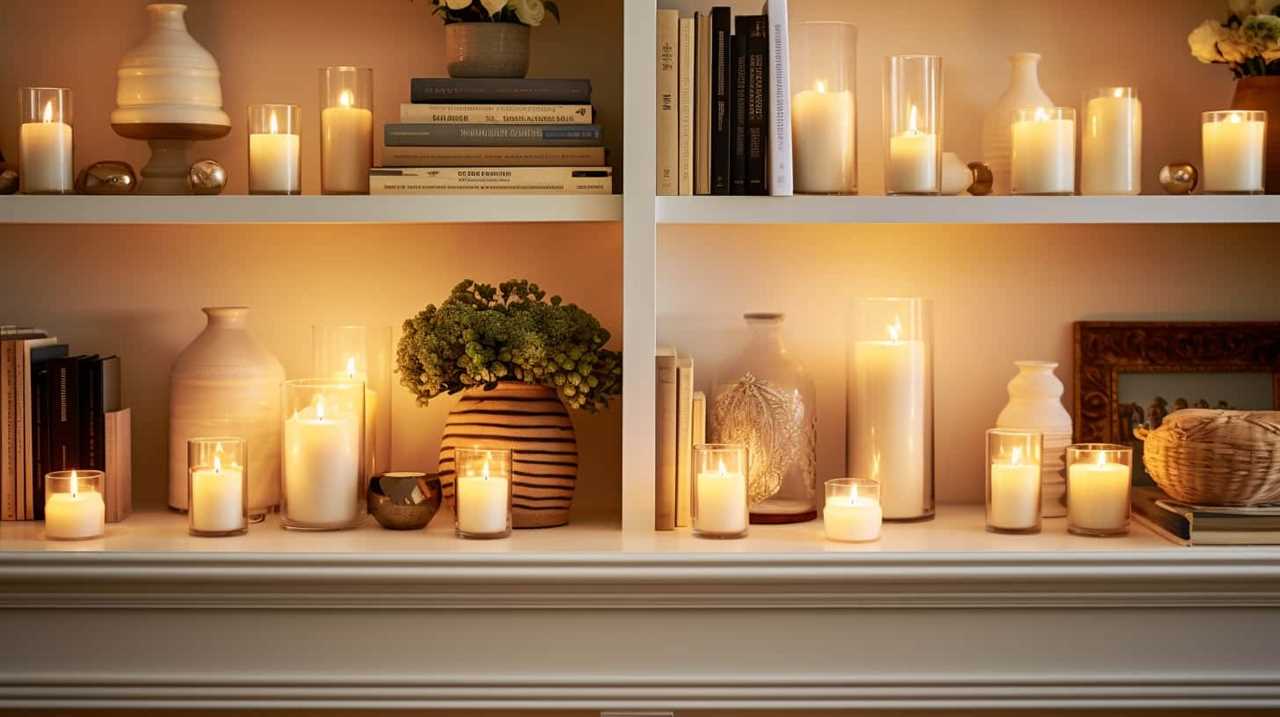
Are There Any Special Considerations for Calculating the Burn Time of Floating Candles?
When calculating the burn time of floating candles, it is important to consider factors such as the size and composition of the candle, as well as the environmental conditions. Accurate burn time calculations ensure customer satisfaction.
Conclusion
In conclusion, calculating candle burn time is a process that involves understanding various factors such as candle size, material, wick type and size, and burn rate. By using a formula or a candle burn time calculator, one can estimate the duration of a candle’s burn.
It’s important to consider different candle shapes and make adjustments accordingly. By following these steps and considering tips for extending burn time, one can ensure a precise and thorough calculation of candle burn time.
Remember, as the saying goes, ‘Time burns like a candle, illuminating the moments that pass by.’


